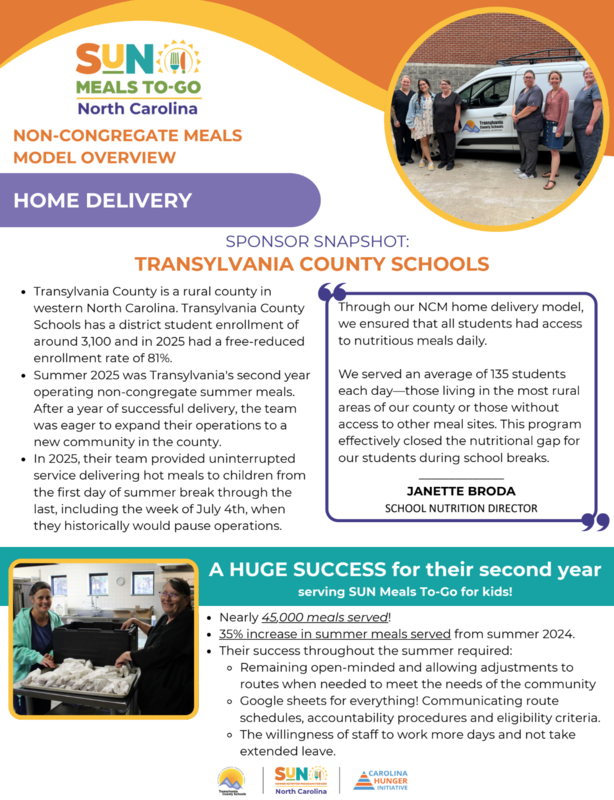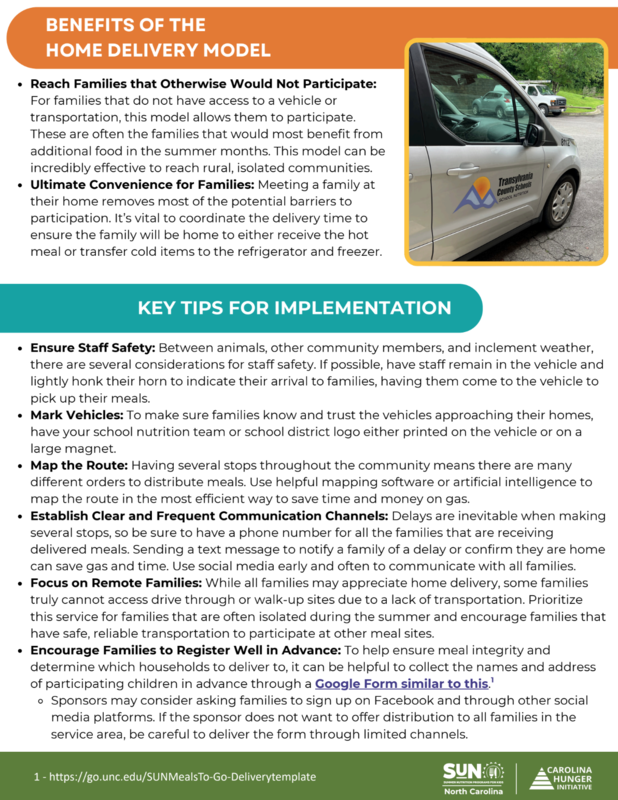Transylvania County Schools' Child Nutrition Department is setting the example for how rural communities can feed children during summer break.
The team served nearly 45,000 meals through an innovative summer home delivery program, setting an example for districts across North Carolina and creating a model that is being implemented around the state.
Our district, which serves about 3,100 students with 81% qualifying for free or reduced-price meals, achieved a remarkable 35% increase in summer meals served in 2025 compared to the previous year. The program delivered meals directly to an average of 135 students daily, focusing on those living in the most remote areas of the county.
"Through our NCM home delivery model, we ensured that all students had access to nutritious meals daily," said Janette Broda, School Nutrition Director for Transylvania County Schools. "We served those living in the most rural areas of our county or those without access to other meal sites. This program effectively closed the nutritional gap for our students during school breaks."
The district provided uninterrupted service from the first day of summer break through the last, including the week of July 4th when they historically would pause operations. Their success with the program was achieved through staff willingness to work extended schedules, flexibility to adjust delivery routes based on community needs, and using Google Sheets to manage route schedules, accountability procedures and eligibility criteria.
Working with the USDA's Non-Congregate Meals Home Delivery model, Transylvania County addressed a critical challenge: transportation barriers that can prevent some families from accessing traditional meal sites. The program brings nutritious meals directly to children's doorsteps, reaching families who otherwise would be unable to participate.
The district's comprehensive approach includes using clearly marked school vehicles, efficient route mapping, advance family registration through digital forms, and robust communication channels to manage delays and confirm availability. Staff remain in vehicles for safety and use horn signals to announce arrivals, while social media and text messaging keep families informed about schedules.
Other school districts are now looking to Transylvania County Schools as they plan their own summer nutrition programs. The district's proven track record with the summer home delivery model shows that with innovative thinking, dedicated staff and community-focused planning, communities can successfully expand their reach during critical summer months when many children might otherwise go without adequate nutrition.
As Transylvania County Schools prepares for their third year of home delivery service, their work continues to serve as a blueprint for ensuring no child goes hungry during school breaks.



